Related notes: Composition Camera Color Modeling Sculpting Characters Lighting Perception
Visual Design
Organize for perception
- Ambiguity evoke thinking.
- Less detail will stimulates and engage the imagination more. Will pull you in.
#### Engineering vs design (human centric) prototypes
design thinking is methodology - prototypes - ask question expose assumptions and sneak to the future
engineers check if it work correctly
Elements
| Design Elements | ||||
|---|---|---|---|---|
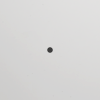 |
Point | 1D | ||
 |
Line | 2D | Shape dynamic, Variations, Single stroke | |
 |
Shape | 2D | Geometric, Organic |
Perception of shape depend on contrast |
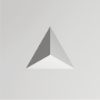 |
Form | 3D | Circular (friendly) vs Jagged (danger) | |
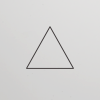 |
Space | Vertical (powerful), Horizontal (stability), Negative | ||
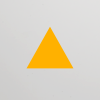 |
Color | Hue | ||
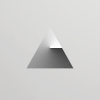 |
Value | Level of lightness | Build by adding or subtracting lightness | |
 |
Texture | Properties of material. | ||
 |
Typo | Typography | Serif, Sans Serif, Script, Monospaced, Display |
Principles
| Design Principles | |||
|---|---|---|---|
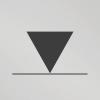 |
Balance | Optical (not mathematical) distribution of visual Weight, Gravity Pressure | |
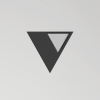 |
Emphasis | Element Dominance. Attention given to some aspect of a composition | |
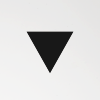 |
Contrast | Juxtaposition of elements with opposite attributes to emphasis or attract attention | |
 |
Proportion | Scaling elements as they relay to each other. Relative Size or amount | |
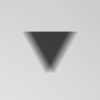 |
Movement | Lines, edge, color or path that imply Direction (flying birds, road) | |
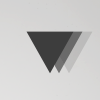 |
Repetition | Similar elements in Sequence. Create Rhythm or Pattern. Pacing, aligmnet, interlock (one into other), echoes. | |
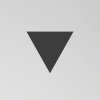 |
Unity | all elements together create Harmony | |
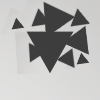 |
Variety | hold viewer attention |
Vitruvian triad
Sustainable, Beneficial, Attractive
Dieter Rams
Innovative, Useful, Aesthetic, makes a product understandable, unobtrusive, honest, long-lasting,** thorough down** to the last detail, environmentally-friendly, little design as possible.
- Simplicity - to quick communicate and protecting from complexity. design great to communicate idea quickly
- Energy is primary - Form must follow.
- Harmony vs Chaos
Aristotle’s four causes
Four causes are, of course, the material, formal, final, and efficient causes. The four causes signify ways in which a thing is indebted for its existence.
Visual Library
Exposed to visual library
Design Methodology
The applied arts. Design is a language. It’s thinking, never generic! It works as a form in the context.
- Brief
Parti pris– statement of design goals and constraints - Analysis – analysis of current design goals form and function
- Choose key words for representative things, to get essence.
- Research – Create a board. investigating similar design solutions in the field or related topics
- Order ref. and make idea clear, choose and mark part of references you want to use to avoid ambiguity.
- Design Start on easy perspectives like side view
recognize features …
form follow function
- (Marked for speed? like motorcycles ) when it was made ‘80 ‘90. Different characters. Curved or quad, weight, level of detail
- Animalistic features. Design base on nature or manufactured items
- Harmony and dissonance
Subject costs
- Difficulty of subject matter: easy: give you large margin of error - organic shapes, subject matters we are not familiar on daily basis, more things are more sophisticated so medieval are easier and manufactured harder, human is hard > faces + dynamics and motion science -fiction most difficult because u must be ahead with thought
| Cheaper / easier | |
|---|---|
| dirt and destroyed | clean |
| dark | bright |
| existing | non existing |
| past | future |
| interesting silhouette | simple silhouette harder to fill with detail (may require posing difficult forms ) |
| night | day |
| moody | good weather (less to play with) |
| fogy | clear |
| desaturated | full color spectrum |
| silhouete | direct light |
| abbandoned | in use |
| reclamed by nature | maintained |
| megastructure | human scale structure |
| distance | closeup |
| ancient | modern |
| iconic culture | global culture |
| classical (more shapes and proportions) | models |
| geometric | organic |
| exterior | interior |
| show room | lived in |
| natural | man made |
| segmented nature hard surface | smooth soft surace |
| non human | human |
| old | young |
| loose clothing | tight fitting |
| stylized | photo real |
| high detial | min detail |
| exposed function | hidden functions |
Subject matter
Design from base
You know what things are. culturally programmed by life.
Cultural norms
grounded in cultural acceptance
find anchor point to build designs around like: circle
strong visual language help identify patterns
Use !! Anchors as advantages
Design for existing settings
If you need to design something in a similar style, reverse engineering lets you understand design influences and intentions. Find references they might use
References
elevated fantasy - contradiction. Fantasy or contemporary.
Things not working from memory. Its crucial therefore we need references.
| . | ||
|---|---|---|
| DNA | Culture aesthetic, History Period (‘80), Function , engineering , life expectancy economic |
Universal, Cultural / Animalistic, Manufactured |
| Material | Substance, Stiffness |
Smooth, Rough / Leather, Spandex |
| Age | Wear, Tear, Erosion, Dirt, Scratches |
|
| Pattern | Uniform, Fractal | |
| Motion | Nature of motion |
Organic, Mechanic |
| other specifics… | Minimalistic or Rich, thin, heavy, durability, socio-political influences, rules of the world |
- WHAT - Fundamentald & Technical skills
- WHERE - Exteriors, interiors, scale
- WHEN - Period appropriate details
- WHO - Human Experiences & Interactive designs
- WHY - Entertainment value & story elements
Conception
Concept is a form of communication . Can help in further development if references are insufficient. Can be in various forms, sketch of design
- Exploration:
variationsanditerations(make 3 options and hybridize based on feedback) Options, not variations. Variations are for finished concepts. - Concept should be usable
- From perspective to be able
to translatedirectly to 3d - Draw additional
side viewsand important elements. - Don’t limit yourself. Use 3d, textures, kit bash, references, photo bash
Scale
proportionsare critical. If sth to thick > like a toy can change perception!- Refer to
human scaleand showrelationswith other objects - lot of fog make enviro bigger
compression and expansion
how to use space
- hallway is directional / hall is open
-
shifts are important and build pasing
Silhouettes
Detail ()
Less detail will stimulates and engaage the imagination more. Will pull you in. Ambiguilty evoke thinking.
- sprawdź jaki poziom detalu będzie widoczny w finalnej produkcji
organisation of local values
graphic quality
- read extreamly way on shape level
- clear organisation of local values
## Patterns
- general design that addresses a recurring design problem in object oriented system
- general arrangement of objects and classes
harmony
- explain why
- draw a line between form and context. found boundary
- identify forces that make demands on the form (form of crown splash show all forces that influence the splash),
- resolve forces to diagrams, so there is no friction or conflict. (workflow, hierarchy)
- improve existing design Look at existing design in useful way.
Human centric design
Evolutionary Design / Biomimicry
https://youtu.be/Flikscdwoy8 evolutionary and biological mechanisms Way we percive design is influenced by leftover survival mechanisms/ primorial instincts.
Non werbal comunication important
Organic design
zalety organic designu, nie proceduralnego i nie w gridzie
Antropomorpism
We tend to antr… human like qualities to inanimate object. Attah human quilities to objects build relationships and name object that dont ave thoughts and feelings can be used to manipulate in future. Paradolia - seeing faces
Culture and symbolism
Culture and symbolism vs. universal trueths
Kiki Buba effect. people paried kiki to sharp and nice B sound of buba to smooth.
Book about comix McCloudian
Pictorial Vocabulary of any visual art:
move to design or sth: McCloudian ideas that you can ponder for eternity is his diagram of “The Picture Plane.” T Triangle of Representation -lends a non-linear sliding scale of representation that might be used to assign values to an image.
The Picture Plane(Abstract art)Reality(Real life. Photographs. Cinema. Representational art)Language(Logos. Text. Symbol. Icon)
UX/UI
- Diegetic - Source of information came from the world recounted story
- Non-Diegetic - Source of information came from outside commentary sound / HUD (out of world)
- Spatial
-
Meta
- Consistency / Intentionality
- Ergonomy. The time to acquire a target is a function of the distance to and size of the target.
- Visual Feedback
- Simplicity / Cognitive Load. (The time it takes to make a decision increases with the number and complexity of choices.)
https://lawsofux.com/
UI elements
Iconography - construction grid, smallest point
Typography -
.
- światło, równowaga optyczna patternu
Typography
Atypography - Art Movement Introduction
History
pictagrams > abstracted > cuneiform(graphic symbols depictive things) > hieroglyphs (from ancient Egypt) > > > Greek lapidary letters (more abstract 22 letters ancient Greece’s first use of letter orms) »
Ancient Mesopotamia - clay bulley Mesopotamian Sumero-Akkadian Cuneiform
Clay Bulleys
Mesopotamian Sumero-Akkadian Cuneiform Mayan Glyphs Indus Valley Script Chinese Seal Script
Alphabet
Roman
Cyrylica
Serifs:
- Guttenberg press 1440 >
black letterfont - Roman - Nocholas Jensen >
roman type face- Clean letters - Cursiva
- Garamond font San - Serifs 1816 no in print cause not enough distinguish.
- for posters. attention and readable from distance.
- art nuovo. nierówne Times new roman - before WWI Dadaism - mix Russian - harsh blocking fonts Bauhaus font - ideal universal geometric. Helvetica - WWII swiss modernism - no ornaments - create for international use 50’ > used by a lot of modern companies international style > Americana corporation > pap culture of ;50 , ‘60. a lot of designs
punk > hand graphic breaking rules / technology > limitation digital
Comic sans - 1994 - Trajan - movie poster fornt
2000- digital > more complex > maximalism
Impact - font for meme . *Lobster - events
https://www.playforthoughts.com/blog/how-to-design-a-logo-from-scratch-ultimate-guide
Typefaces (fonts)
Font have size and regular/italic https://www.luzi-type.ch/notes-pairing
=====
In typography, a dingbat is an ornament, specifically, a glyph used in typesetting, often employed to create,
=Dingbat
https://fonts.google.com/knowledge/introducing_type https://fonts.google.com/knowledge/choosing_type https://fonts.google.com/knowledge/using_type
https://en.wikipedia.org/wiki/O_%28Cyrillic%29#/media/File:Cyrillic_letter_O_-_uppercase_and_lowercase.svg https://twitter.com/jgspace_design/status/1698335609771946139
you can design things to be boring or look cheap at purpose
principle of least resistance - The path of least resistance is the physical or metaphorical pathway that provides the least resistance to forward motion by a given object or entity
Product design
- start designning with parts and metodes you are familiar with. with egsiting tools
- try to imagine platonic ideal of perfect product and, reverse engeniring simplifying
visual language is important - visual is important to let humans make snap decisions about
Dieter Rams Philippe Starck